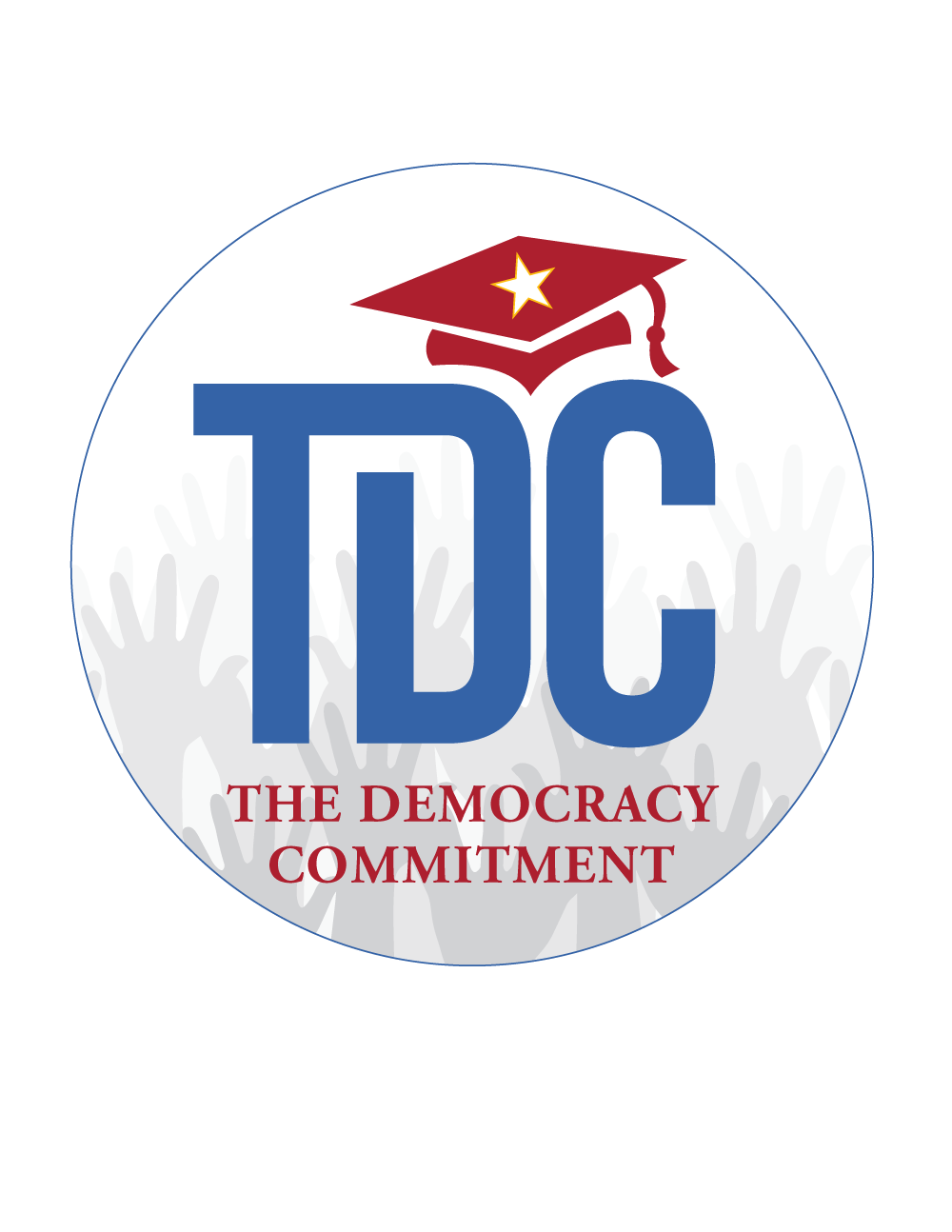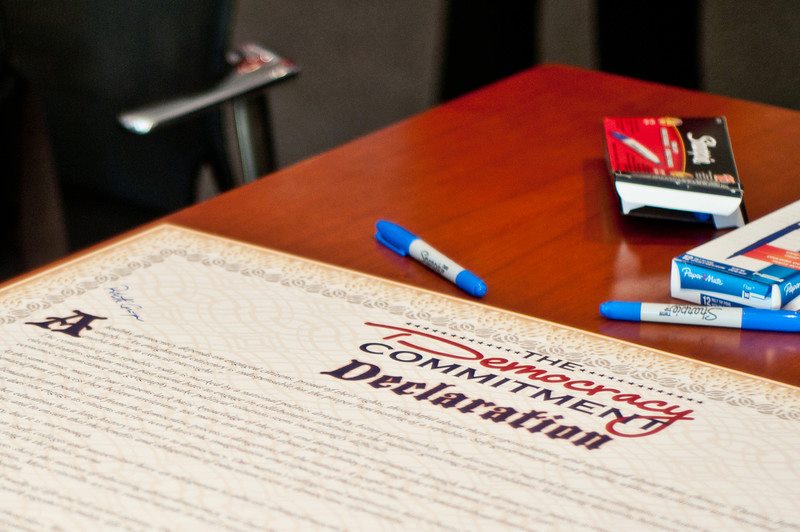Note: The Democracy Commitment is a partner in the new American Commonwealth Partnership (ACP).
By Harry C. Boyte, American Commonwealth Partnership National Coordinator
At the forefront of change will be a monthly online newsletter about activities and developments in the American Commonwealth Partnership (ACP). ACP is an alliance of colleges and universities, schools and others dedicated to the democracy college ideal for all higher education. Democracy colleges have a signature identity of strong connection to their communities, where students learn skills of working across differences on public problems and discover the democratic possibilities of America.
I’ve just come back from San Antonio. Blase Scarnati, director of the First Year Seminar at Northern Arizona University, and I did a featured session on the American Commonwealth Partnership at the Academic Affairs meeting of the American Association of State Colleges and Universities (AASCU). This biannual meeting once simply involved provosts, but in the last several years larger teams have come to help facilitate change in their institutions.
We had intense conversations about ACP, within our session as well as before and after. Overall, the weekend underlined both challenges and opportunities for the sustained work of “building democracy colleges.”
We reported on results from field testing and focus groups organized by the National Issues Forums Institute (NIFI), ACP’s partner in launching a national discussion on higher education’s role in America’s future. The discussions in communities and on campuses will begin in April and continue through the year. The Department of Education has suggested several ways in which they might help.
Research last year on public views toward higher education and the first tests of the framework to be used in the discussions have generated important findings.
The draft framework presents several alternative roles for people to consider and discuss: higher education as an engine of economic growth; as a path to the middle class for those from disadvantaged backgrounds, and as a contributor to communities and the democracy. People want to integrate all three, not choose among them.
But most people also seem unaware of ways in which colleges and universities can play this third role. Since the last two decades have seen significant civic engagement work in higher education, this finding suggests a communications challenge, also highlighted by sympathetic participants from outside of higher education at the White House gathering, who commented that phrases commonly used to describe engagement – civic mission, civic engagement, and others – would not be easily understood by broader publics.
When the third option is illustrated with examples of higher education’s helping students and faculty learn skills and habits of collaborative work across differences on public problems, it generates surprise and animated discussions. Few people are aware that colleges or universities can play any role in teaching such skills. But across many differences, Americans are worried that “we are less and less able to work across differences to get anything done,” and fear for the future of the nation. Citizens are alarmed by Congress, but see polarization, inflammatory rhetoric and gridlock extending to every level of society and to all sorts of issues, from local zoning changes to reconstruction of the nation’s electrical grid.
Powerful forces feed the polarizing dynamic, including the formula, with roots in 1970s activism, which dominates most civic and political campaigns: identify an enemy; define issues as good versus bad; and use inflammatory language to shut down critical thought. Talk radio, cable news and the internet are potent operationalizing tools.
At San Antonio, there were strong examples of developing capacities for collaborative work that push back against such polarization. Blase Scarnati described the curricular innovations at NAU which involve hundreds of students in interdisciplinary Action Research Teams as part of the First Year Seminar. Students undertake public work projects on issues – immigration, weatherization, school bullying and others – in ways designed to teach such skills and build public relationships with diverse groups, connected to interdisciplinary learning. Over supper one evening I heard a rich account from Dayna Seelig, Associate Vice President for Academic Affairs at Morehead State University in Kentucky, about her own work over many years in teaching such skills and habits to students, faculty and staff of the university.
But such stories are rarely told in describing engagement efforts, and I believe that most examples of teaching and learning collaborative public work remain invisible. There is a need to shine a spotlight on education for such efforts. There are also strong institutional incentives for doing so in a time of public alarm about the fraying of American society and ebbing public support for higher education. The initiatives of ACP (deliberative dialogues, student organizing, Citizen Alum, civic science, pedagogies of engagement, community civic health, public scholarship, and policy) all help to foster education for collaborative public problem solving. But it will take sustained effort to make such teaching and learning central to institutional identity.
What might a “Democracy College Morrill Class” look like dedicated to this task? We suggested the possibility of a cohort of colleges and universities that make an explicit commitment for sustained collaborative learning to deepen curricular and co-curricular engagement in civic work. It is now only the seed of an idea, but even without detail there was considerable interest. Several administrators said that their institutions would definitely like to be involved.
Find more information about ACP here.


